In today’s fast-paced, interconnected world, digital marketing has become more crucial than ever. With the majority of consumers relying on the internet for information, products, and services, businesses need to be visible where their target audience is searching.
By harnessing the power of digital marketing, businesses can reach potential customers, build brand awareness, and drive sales in a cost-effective and highly targeted manner.
Unlike traditional marketing methods, digital marketing allows for precise targeting, real-time data analysis, and quick adjustments to campaigns, ensuring that businesses can stay ahead of the competition.
Table of Contents
Who This Digital Marketing Guide Is For
Whether you’re completely new to the world of digital marketing, looking to enhance your existing marketing skills, or simply interested in learning more about this dynamic field, this comprehensive guide is for you.
It’s designed to be an accessible and easy-to-understand resource for anyone looking to dive into the world of digital marketing, regardless of prior experience or background.
What to Expect in This Digital Marketing Guide
In this extensive guide, we’ll cover the fundamentals of digital marketing, providing you with a solid foundation to build upon.
You’ll learn about various types of digital marketing, from content marketing and SEO to social media and email marketing, as well as strategies for creating effective campaigns.
We’ll also explore the latest digital marketing trends shaping the industry, such as video marketing and personalization, and provide actionable digital marketing tips to help you succeed in the ever-evolving digital landscape.
Additionally, we’ll introduce you to essential tools that can streamline your marketing efforts and help you achieve your goals.
Throughout the guide, we’ll share examples, stats, and insights to make your learning experience engaging and informative.
So, let’s embark on this exciting journey together and unlock the full potential of digital marketing!
Fundamentals of Digital Marketing
Digital marketing refers to the use of online platforms, channels, and technologies to promote products, services, or brands. It encompasses a wide range of strategies and tactics designed to reach, engage, and convert a target audience. By leveraging the power of the internet, digital marketing allows businesses to communicate with consumers in real time, measure the effectiveness of their campaigns, and adapt quickly to changes in consumer behavior.
Types of Digital Marketing
1. Content Marketing
Content marketing involves creating and sharing valuable, relevant, and engaging content with the goal of attracting, retaining, and nurturing a target audience. This can include blog posts, videos, infographics, podcasts, and other forms of content that educate, entertain, or inspire. By providing value to your audience, you can build trust, establish your brand as an authority, and ultimately drive conversions.
2. SEO (Search Engine Optimization)
SEO is the practice of optimizing your website and content to rank higher in search engine results pages (SERPs). This involves both on-page optimization (e.g., keyword research, meta tags, and content structure) and off-page optimization (e.g., building backlinks and social media signals). A well-executed SEO strategy can drive organic traffic to your website, increase brand visibility, and improve the overall user experience.
3. SEM (Search Engine Marketing)
SEM involves paid advertising campaigns on search engines like Google and Bing. The most common form of SEM is pay-per-click (PPC) advertising, where you bid on keywords related to your products or services, and your ads appear when users search for those keywords. You only pay when users click on your ads, making SEM a cost-effective way to drive targeted traffic to your website and generate leads or sales.
4. Social Media Marketing
Social media marketing is the process of using social media platforms like Facebook, Instagram, Twitter, LinkedIn, and Pinterest to promote your brand, engage with your audience, and drive website traffic. This can involve organic strategies, like posting content and interacting with followers, as well as paid advertising campaigns targeted at specific demographics or interests.
5. Email Marketing
Email marketing involves sending targeted and personalized emails to a group of subscribers to nurture relationships, build brand loyalty, and drive conversions. This can include newsletters, promotional offers, or triggered emails based on user behavior (e.g., abandoned cart emails). Effective email marketing relies on segmentation, personalization, and compelling content to resonate with your audience.
6. Affiliate Marketing
Affiliate marketing is a performance-based marketing strategy where businesses partner with affiliates (individuals or companies) who promote their products or services in exchange for a commission on sales or leads generated. This can be an effective way to boost brand awareness, reach new audiences, and drive sales with a relatively low upfront investment.
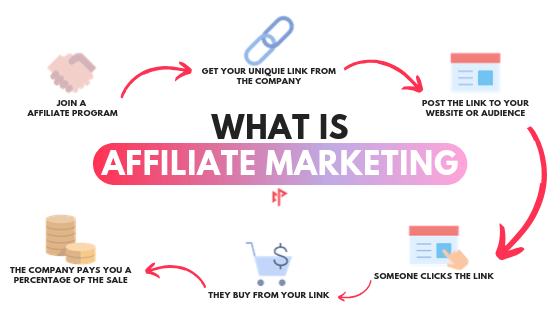
7. Influencer Marketing
Influencer marketing involves partnering with influencers (people with a significant following and credibility within a specific niche) to promote your products or services. Influencers can create content featuring your brand or endorse your products, leveraging their audience’s trust to drive awareness and conversions.
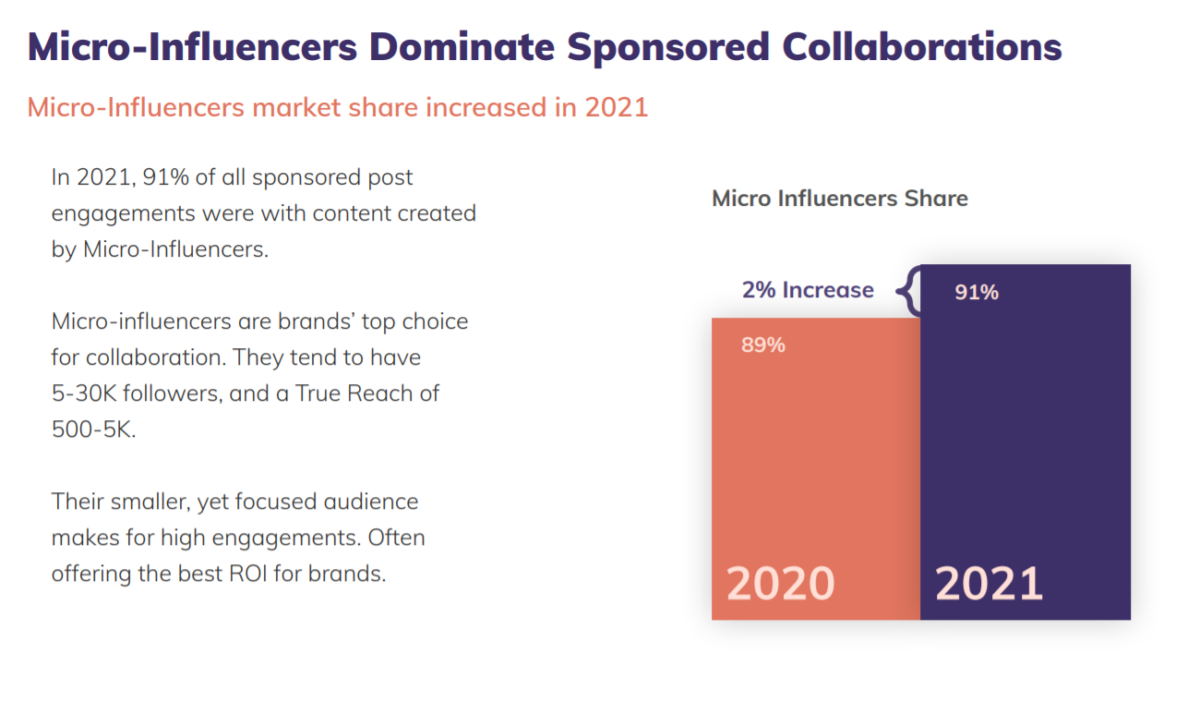
Inbound vs. Outbound Marketing
Inbound and outbound marketing are two different approaches to digital marketing. Understanding the difference between them will help you choose the best strategy for your business.
1. Inbound Marketing
Inbound marketing is a customer-centric approach that focuses on attracting potential customers by offering valuable content tailored to their needs and interests. The goal is to create a strong relationship with your audience, establish trust, and ultimately convert them into customers. Inbound marketing tactics include:
- Content marketing (e.g., blog posts, ebooks, whitepapers)
- Search engine optimization (SEO)
- Social media marketing
- Webinars and podcasts
- Email marketing
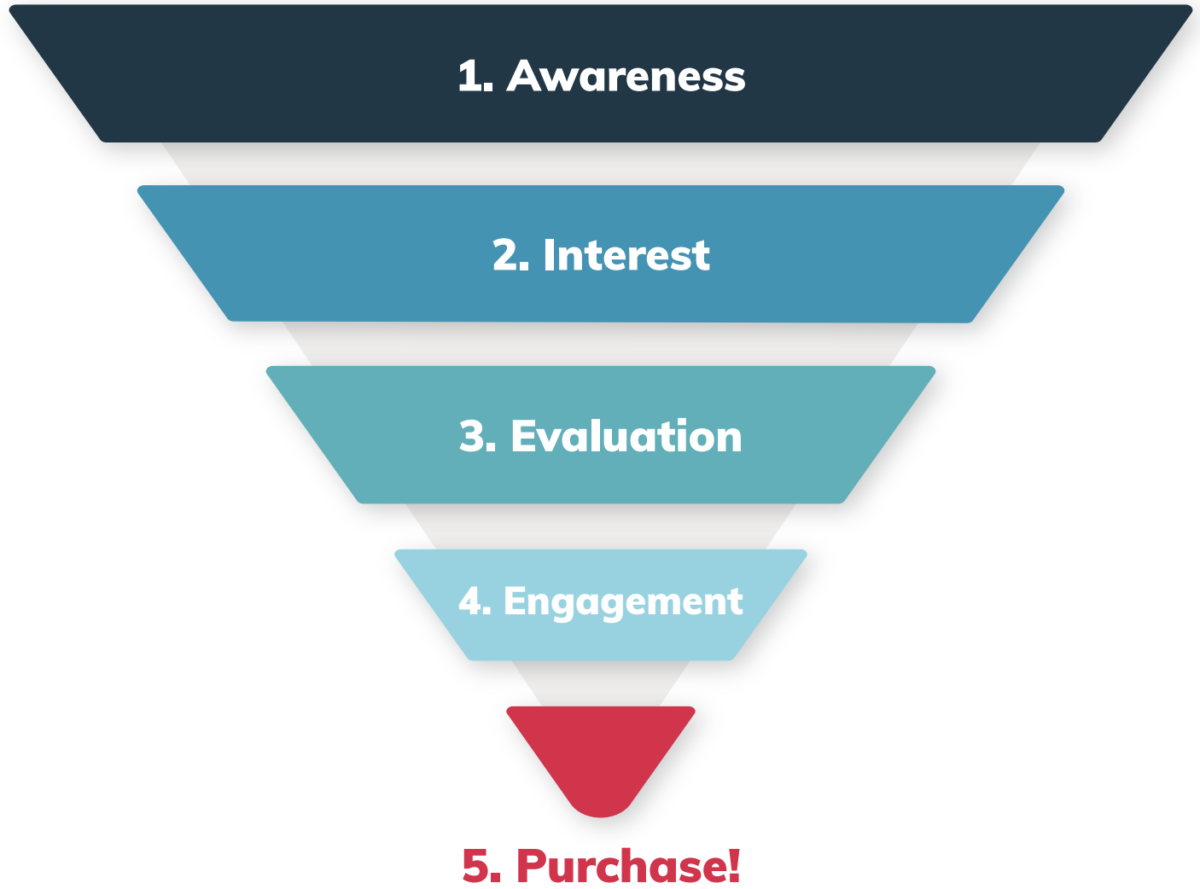
2. Outbound Marketing
Outbound marketing, on the other hand, is a more traditional approach that involves pushing your message out to a broad audience, hoping to capture their attention. This approach can be less targeted and often more intrusive. Outbound marketing tactics include:
- Television and radio ads
- Print ads (e.g., newspapers, magazines)
- Billboards and outdoor advertising
- Cold calling
- Direct mail
While both inbound and outbound marketing can be effective, inbound marketing tends to be more cost-effective and generates higher-quality leads. For beginners in digital marketing, focusing on inbound marketing strategies is a great way to start.
B2B vs. B2C Digital Marketing
Digital marketing can be applied to both business-to-business (B2B) and business-to-consumer (B2C) industries. However, the strategies and tactics used can vary significantly between the two.
1. B2B Digital Marketing
B2B digital marketing targets other businesses and organizations as potential customers. The sales cycle in B2B is typically longer, and the decision-making process involves multiple stakeholders. B2B marketers need to focus on:
- Providing educational content that helps potential customers make informed decisions
- Building relationships and trust with decision-makers
- Demonstrating expertise and thought leadership in the industry
- Leveraging professional networks like LinkedIn for outreach and content distribution
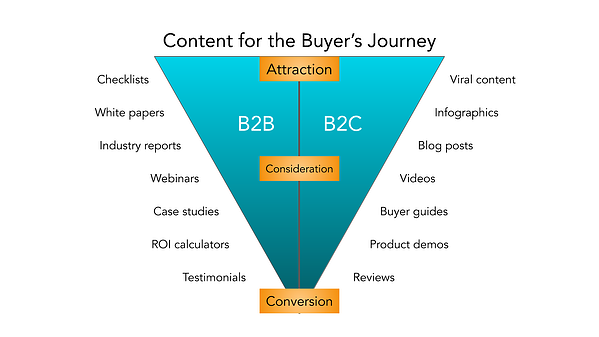
2. B2C Digital Marketing
B2C digital marketing targets individual consumers. The sales cycle is usually shorter, and purchasing decisions are often influenced by emotions, personal preferences, and recommendations from friends or influencers. B2C marketers need to focus on:
- Creating engaging content that resonates with their target audience
- Leveraging social media platforms, like Facebook, Instagram, and TikTok, to reach consumers
- Offering personalized experiences and promotions to drive sales
- Encouraging user-generated content and influencer partnerships for brand exposure and credibility
By understanding the differences between B2B and B2C digital marketing, you can tailor your approach to effectively reach your target audience and achieve your business goals.
Digital Marketing Strategy
A solid digital marketing strategy is the foundation of your online marketing efforts. It serves as a roadmap for achieving your business objectives and helps you make informed decisions about your marketing campaigns. In this section, we will discuss the key components of a successful digital marketing strategy.
Setting SMART Goals
The first step in creating an effective digital marketing strategy is to establish SMART goals. SMART stands for Specific, Measurable, Achievable, Relevant, and Time-bound. By setting SMART goals, you can ensure that your marketing efforts are focused and results-driven. Here’s a breakdown of what SMART goals entail:
- Specific: Clearly define what you want to achieve with your digital marketing efforts. Avoid vague goals and instead focus on specific outcomes.
- Measurable: Establish criteria for measuring your progress towards the goal. This can include key performance indicators (KPIs) such as website traffic, conversions, or social media engagement.
- Achievable: Make sure your goals are realistic and attainable, given your resources and constraints.
- Relevant: Ensure that your goals align with your overall business objectives and contribute to your company’s growth.
- Time-bound: Set a deadline for achieving your goal, which helps you stay focused and track your progress over time.
Examples of SMART goals for digital marketing can include:
- Increase website traffic by 20% within the next six months
- Achieve a 5% conversion rate on a specific landing page within three months
- Grow the email list by 1,000 subscribers within the next quarter
Identifying Your Target Audience
Understanding your target audience is crucial for creating content and campaigns that resonate with them. This involves researching and segmenting your audience based on their demographics, interests, and
behavior. Once you have a clear picture of your audience, you can tailor your marketing efforts to their needs and preferences, ultimately increasing the effectiveness of your campaigns.
Buyer Personas
Buyer personas are semi-fictional representations of your ideal customers, based on real data and market research. They help you understand your audience’s motivations, pain points, preferences, and behavior, so you can create targeted and relevant marketing messages.
To create buyer personas, gather information from a variety of sources, such as:
- Existing customer data: Analyze your customer database to identify patterns and trends among your best customers.
- Market research: Conduct surveys, interviews, or focus groups with your target audience to gather insights into their needs and preferences.
- Social media and online behavior: Monitor your audience’s online activity and engagement to learn more about their interests and habits.
Once you’ve collected this information, you can create detailed buyer personas, including:
- Demographics: Age, gender, income, education, location, etc.
- Professional background: Job title, industry, company size, etc. (for B2B)
- Interests and hobbies: What your audience enjoys doing in their free time.
- Pain points: Challenges, frustrations, or problems your audience faces that your product or service can solve.
- Preferred communication channels: How your audience prefers to receive information and interact with brands.
By developing buyer personas, you’ll be able to create more targeted and effective marketing campaigns that resonate with your audience, ultimately leading to higher engagement and conversion rates.
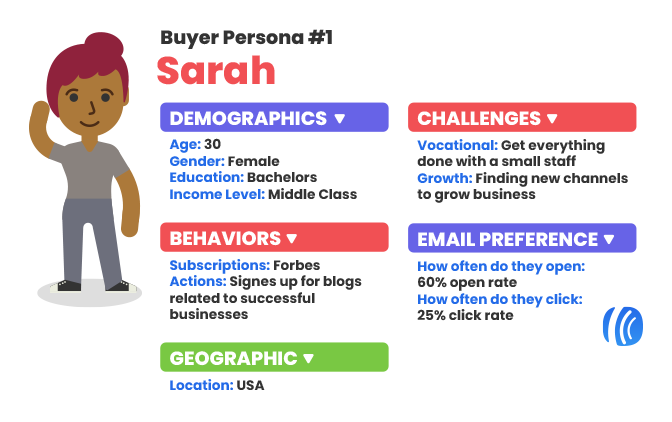
Creating a Digital Marketing Content Plan
A content plan is a crucial component of your digital marketing strategy, as it helps you organize and manage your content creation efforts. A well-thought-out content plan ensures that your marketing messages are consistent, relevant, and aligned with your goals. Here are the steps to create an effective content plan:
- Conduct a content audit: Evaluate your existing content to determine what’s working and what needs improvement. Identify content gaps and opportunities to better serve your audience.
- Brainstorm content ideas: Generate a list of topics based on your audience’s interests, pain points, and frequently asked questions. Use keyword research tools to identify popular search terms related to your niche.
- Determine content formats: Choose the formats that best suit your audience’s preferences and your marketing goals. These can include blog posts, videos, infographics, podcasts, ebooks, or social media posts.
- Create an editorial calendar: Schedule your content creation and publication timeline. Use a tool like Google Calendar or Trello to organize your content plan and track deadlines.
- Assign roles and responsibilities: Delegate tasks to your team members, such as research, writing, editing, design, and promotion, to ensure a smooth content creation process.
- Measure and analyze performance: Monitor your content’s performance using KPIs, such as page views, social shares, and conversions, to identify what resonates with your audience and make adjustments as needed.
Choosing the Right Digital Marketing Channels
Selecting the appropriate digital marketing channels is essential for reaching your target audience and achieving your marketing goals. Here are some tips to help you choose the right channels for your digital marketing strategy:
- Identify your audience’s preferred channels: Determine where your target audience spends their time online and which platforms they use the most. For example, younger audiences may prefer Instagram or TikTok, while a B2B audience may be more active on LinkedIn.
- Consider your content format: Choose channels that align with the type of content you create. For example, if you produce video content, YouTube or Vimeo would be suitable platforms.
- Assess your resources: Be realistic about your team’s capabilities and resources. Focus on a few channels where you can consistently create high-quality content, rather than spreading yourself too thin across multiple platforms.
- Analyze competitors: Look at where your competitors are active and successful in engaging their audience. This can give you insights into which channels might work well for your business.
- Test and adjust: Start by testing a few channels and monitor their performance. Use data-driven insights to make adjustments to your digital marketing strategy and prioritize the channels that yield the best results.
By carefully selecting your marketing channels, you’ll increase your chances of reaching your target audience and achieving your digital marketing goals.
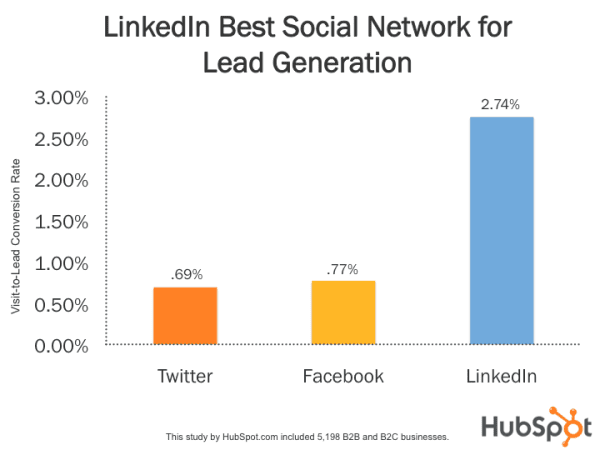
Allocating Digital Marketing Resources and Budget
Allocating resources and budget effectively is essential for the success of your digital marketing strategy. It ensures that you’re making the most of your available resources and investing in the right channels and tactics. Here are some steps to help you allocate resources and budget:
- Prioritize your goals: Determine which goals are most important for your business, and allocate resources accordingly. For example, if your primary goal is to increase website traffic, you might allocate a larger portion of your budget to SEO and content marketing efforts.
- Assess the cost of each channel: Calculate the estimated costs associated with each marketing channel, including ad spend, software subscriptions, content production, and personnel. This will help you make informed decisions about where to invest your budget.
- Evaluate ROI potential: Consider the potential return on investment (ROI) for each marketing tactic. Invest more in channels and tactics that have a higher likelihood of generating a positive ROI.
- Plan for contingencies: Set aside a portion of your budget for unexpected expenses or opportunities that may arise during the course of your marketing efforts.
- Monitor spending: Regularly track your expenses to ensure that you’re staying within your budget and making the most of your resources. Adjust your spending as needed to optimize your marketing efforts.

Free Tool: Social Media ROI Calculator
Monitoring and Adjusting Your Digital Marketing Strategy
Digital marketing is an ever-evolving landscape, and it’s essential to continually monitor and adjust your strategy to stay ahead of the competition and achieve your goals. Regularly evaluating your marketing efforts helps you identify areas for improvement, capitalize on new opportunities, and make data-driven decisions.
Here are some steps for monitoring and adjusting your digital marketing strategy:
- Track KPIs: Establish key performance indicators (KPIs) for each marketing channel and tactic to measure your progress toward your goals. Examples of KPIs include website traffic, conversions, social media engagement, email open rates, and click-through rates.
- Analyze performance data: Use tools like Google Analytics, social media analytics, and email marketing reports to collect and analyze data on your marketing campaign’s performance. Look for patterns, trends, and areas where you’re excelling or underperforming.
- Conduct regular reviews: Schedule periodic reviews of your marketing strategy, such as monthly or quarterly, to evaluate your progress and make necessary adjustments. Use the insights gained from your data analysis to inform your decisions.
- Test and experiment: Continuously test different tactics, messaging, and creative elements to determine what resonates best with your audience. For example, try A/B testing different email subject lines, ad copy, or landing page designs to see which versions yield better results.
- Adapt to changes and trends: Stay informed about industry trends, changes in consumer behavior, and updates to marketing platforms and algorithms. Adjust your strategy as needed to capitalize on new opportunities and maintain a competitive edge.
- Solicit feedback: Gather feedback from your audience, team members, and stakeholders to gain valuable insights and suggestions for improving your digital marketing strategy.
Digital Marketing Tools
To execute your digital marketing strategy effectively, it’s essential to use the right tools. These tools can help you streamline your efforts, increase efficiency, and achieve better results. In this section, we’ll explore various tools for SEO, content creation, social media management, and email marketing.
SEO Tools
- Google Analytics: A free web analytics service provided by Google that helps you track website traffic, user behavior, and conversions. Google Analytics is essential for understanding your audience and improving your website’s performance.
- SEMrush: A comprehensive SEO and marketing tool that provides keyword research, competitor analysis, site audit, and more. SEMrush helps you identify opportunities for optimization and outrank your competitors in search engine results.
- Ahrefs: A powerful SEO tool for keyword research, backlink analysis, and site audit. Ahrefs helps you uncover content gaps, track your rankings, and monitor your competitors’ strategies.

Content Creation Tools
- Grammarly: An online writing assistant that checks your content for grammar, spelling, punctuation, and style errors. Grammarly helps you create polished, professional content that engages your audience and boosts your credibility.
- Hemingway Editor: A writing tool that analyzes your content for readability and highlights areas for improvement. Hemingway Editor helps you create clear, concise content with a high Flesch Reading Ease score.
- Canva: A user-friendly graphic design platform that allows you to create visually appealing images, infographics, and social media posts. Canva’s drag-and-drop interface makes it easy to design professional-looking visuals without any design experience.
Social Media Management Tools
- Hootsuite: A popular social media management platform that enables you to schedule, publish, and monitor your social media posts across multiple platforms. Hootsuite helps you save time, stay organized, and track your social media performance.
- Buffer: A social media scheduling tool that allows you to plan and publish your posts across various platforms. Buffer’s analytics features help you analyze your content’s performance and optimize your social media strategy.
- Sprout Social: A comprehensive social media management tool that offers publishing, analytics, and engagement features. Sprout Social helps you stay connected with your audience, respond to messages, and track the success of your social media campaigns.
Email Marketing Tools
- Mailchimp: A popular email marketing platform that enables you to create, send, and track email campaigns. Mailchimp’s user-friendly interface and built-in templates make it easy to design professional emails and manage your subscriber list.
- ConvertKit: An email marketing tool designed for creators and small businesses, offering powerful automation features, customizable templates, and easy-to-use segmentation options. ConvertKit helps you nurture your audience and increase conversions through personalized email campaigns.
- SendinBlue: An all-in-one marketing platform that combines email marketing, SMS, and marketing automation. SendinBlue allows you to create targeted campaigns, automate your marketing efforts, and track your results in real-time.
Digital Marketing Trends
Digital marketing is constantly evolving, and staying up-to-date with the latest trends is crucial for staying ahead of the competition. In this section, we’ll explore five emerging trends in digital marketing that you should keep an eye on.
Video Marketing
Video content is becoming increasingly popular, with 86% of businesses using video as a marketing tool in 2021 (source: Wyzowl). Social media platforms like YouTube, TikTok, and Instagram have fueled the demand for engaging video content. Marketers should prioritize creating high-quality, entertaining, and informative videos to capture their audience’s attention and drive engagement.

Artificial Intelligence
Artificial intelligence (AI) is transforming the digital marketing landscape by automating processes, personalizing customer experiences, and providing actionable insights. According to a Salesforce survey, 84% of customers say that being treated like a person, not a number, is very important to winning their business. AI-powered tools like chatbots, predictive analytics, and customer segmentation can help marketers deliver personalized experiences at scale.
Voice Search
With the growing popularity of voice assistants like Amazon’s Alexa and Google Assistant, voice search is becoming a significant trend in digital marketing. In fact, it’s estimated that by 2022, 55% of American households will have a smart speaker (source: OC&C Strategy Consultants). Marketers should optimize their content for voice search by focusing on conversational keywords and long-tail phrases that mimic natural speech patterns.
Personalization
Personalized marketing is becoming increasingly important, with 80% of consumers stating they are more likely to do business with a company that offers personalized experiences (source: Epsilon). By leveraging customer data and employing AI-driven tools, marketers can create highly targeted campaigns and personalized content that resonates with their audience and drives conversions.
Augmented Reality
Augmented reality (AR) is an innovative technology that combines digital elements with the user’s physical environment, offering immersive and interactive experiences. According to a Statista report, global spending on AR technology is projected to reach $22.8 billion in 2023. Brands can harness the power of AR to develop captivating marketing campaigns, enhance product visualization, and provide unique customer experiences that boost brand awareness and loyalty.
Digital Marketing Tips
To help you get started with digital marketing, we’ve compiled a list of practical tips for various aspects, including SEO, content marketing, social media marketing, and email marketing. By implementing these tips, you can enhance your marketing efforts and achieve better results.
SEO Tips
To improve your website’s visibility in search engine results, consider the following tips:
- Focus on User Intent: Understand the search queries your target audience uses and create content that addresses their needs. For example, if users search for “how to fix a leaky faucet,” provide a step-by-step guide with clear instructions and visuals to help them resolve the issue.
- Optimize for Mobile: With over 50% of global web traffic coming from mobile devices (Statista), it’s crucial to have a mobile-responsive website. Use Google’s Mobile-Friendly Test to ensure your site performs well on mobile devices.
Content Marketing Tips
To create engaging and valuable content for your audience, consider the following tips:
- Tell a Story: Stories resonate with audiences and help them connect with your brand on a deeper level. Share customer success stories, company milestones, or behind-the-scenes glimpses to humanize your brand and build trust.
- Use Visuals: Incorporating visuals like images, infographics, and videos can make your content more engaging and shareable. For example, create an infographic to break down complex concepts or showcase the benefits of your product in a visually appealing manner.

Social Media Marketing Tips
To maximize the impact of your social media marketing efforts, consider the following tips:
- Engage with Your Audience: Respond to comments, answer questions, and ask for feedback to build a rapport with your followers. For example, run a poll on Twitter to gather opinions on a new product feature or share a behind-the-scenes photo on Instagram and ask for caption ideas.
- Post Consistently: Establish a regular posting schedule to maintain your brand’s presence and keep your audience engaged. For instance, share daily tips on Facebook or post weekly product updates on LinkedIn.
Email Marketing Tips
To make the most of your email marketing campaigns, consider the following tips:
- Segment Your List: Group your subscribers based on criteria like demographics, past purchases, or engagement levels. This enables you to send targeted content that caters to their specific interests. For example, send an exclusive discount to subscribers who haven’t made a purchase in the past six months to win them back.
- Test Your Subject Lines: Experiment with different subject line styles to determine what resonates best with your audience. Test variations like questions, personalization, or urgency to see which approach yields higher open rates. For instance, compare “Last chance to save 30% on our best-selling products” with “John, don’t miss out on these exclusive savings!”
Conclusion
Throughout this comprehensive guide, we’ve explored the world of digital marketing for beginners, covering essential topics such as:
- The difference between inbound and outbound marketing, as well as B2B and B2C marketing strategies
- Setting SMART goals to guide your marketing efforts
- Identifying your target audience and creating buyer personas to better understand their needs
- Crafting a content plan and selecting the right marketing channels to reach your audience
- Allocating resources and budget effectively to optimize your marketing campaigns
- Monitoring and adjusting your strategy to ensure ongoing success and growth
As a beginner in digital marketing, it’s natural to feel overwhelmed by the wealth of information and options available. However, by taking a step-by-step approach and applying the concepts covered in this guide, you’ll be well on your way to building a solid foundation in digital marketing.
Remember that success in digital marketing requires persistence, adaptability, and a willingness to learn.
Keep experimenting with new tactics, staying updated on industry trends, and refining your strategy based on data-driven insights. With dedication and hard work, you’ll be able to harness the power of digital marketing to grow your business and achieve your goals.
Good luck on your digital marketing journey, and remember – the best time to start is now!

Ali is a digital marketing blogger and author who uses the power of words to inspire and impact others. He has written for leading publications like Business2Community, Inc. Magazine, and Marketing Profs. When not writing, he enjoys spending time with his family.







